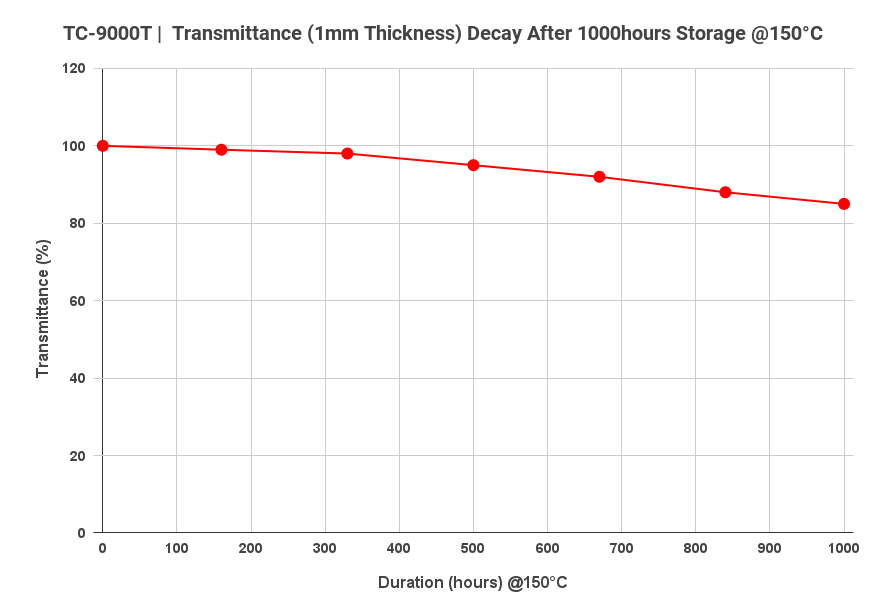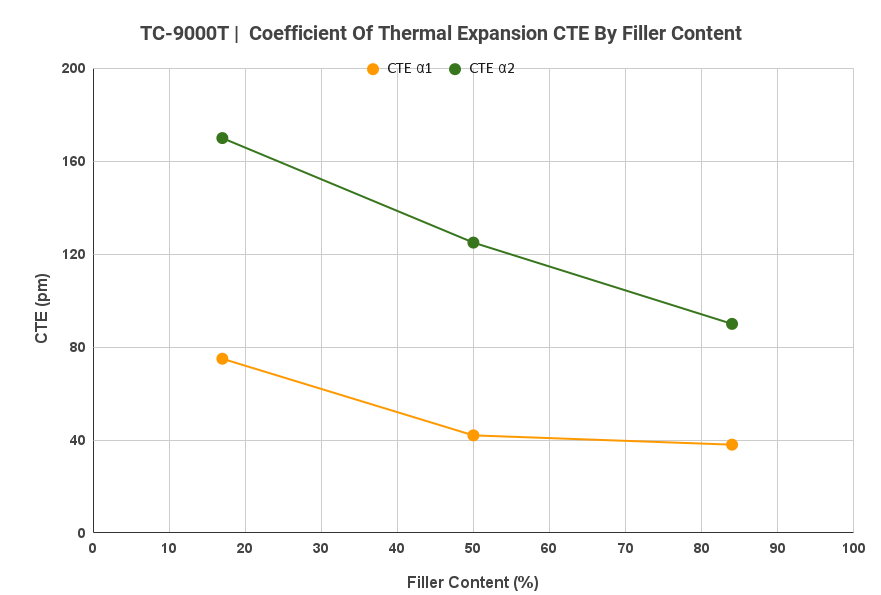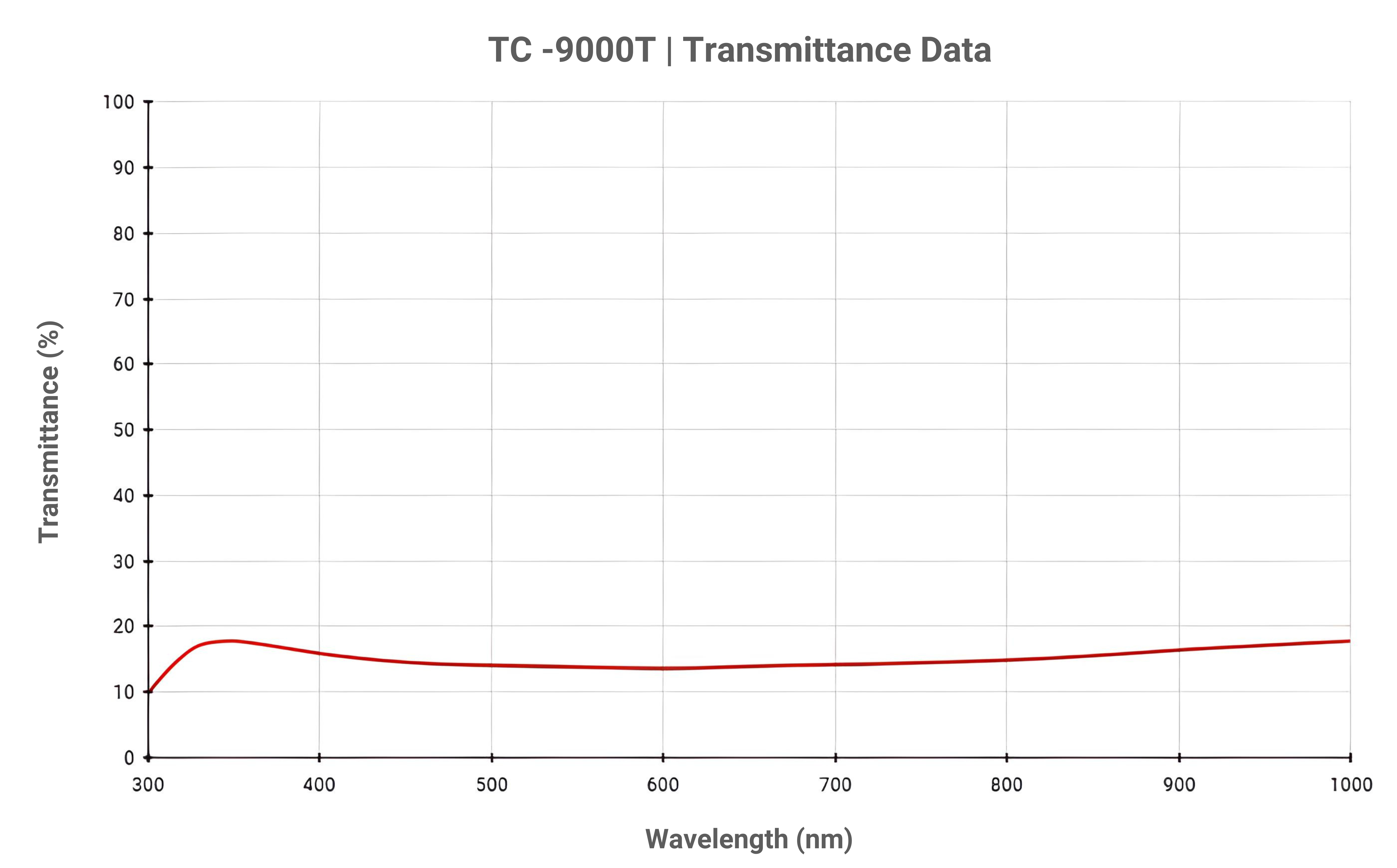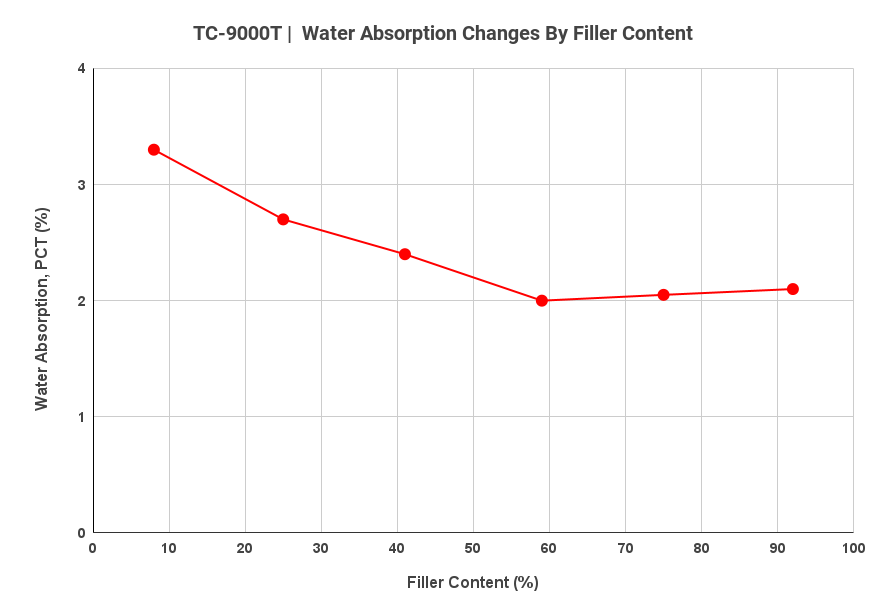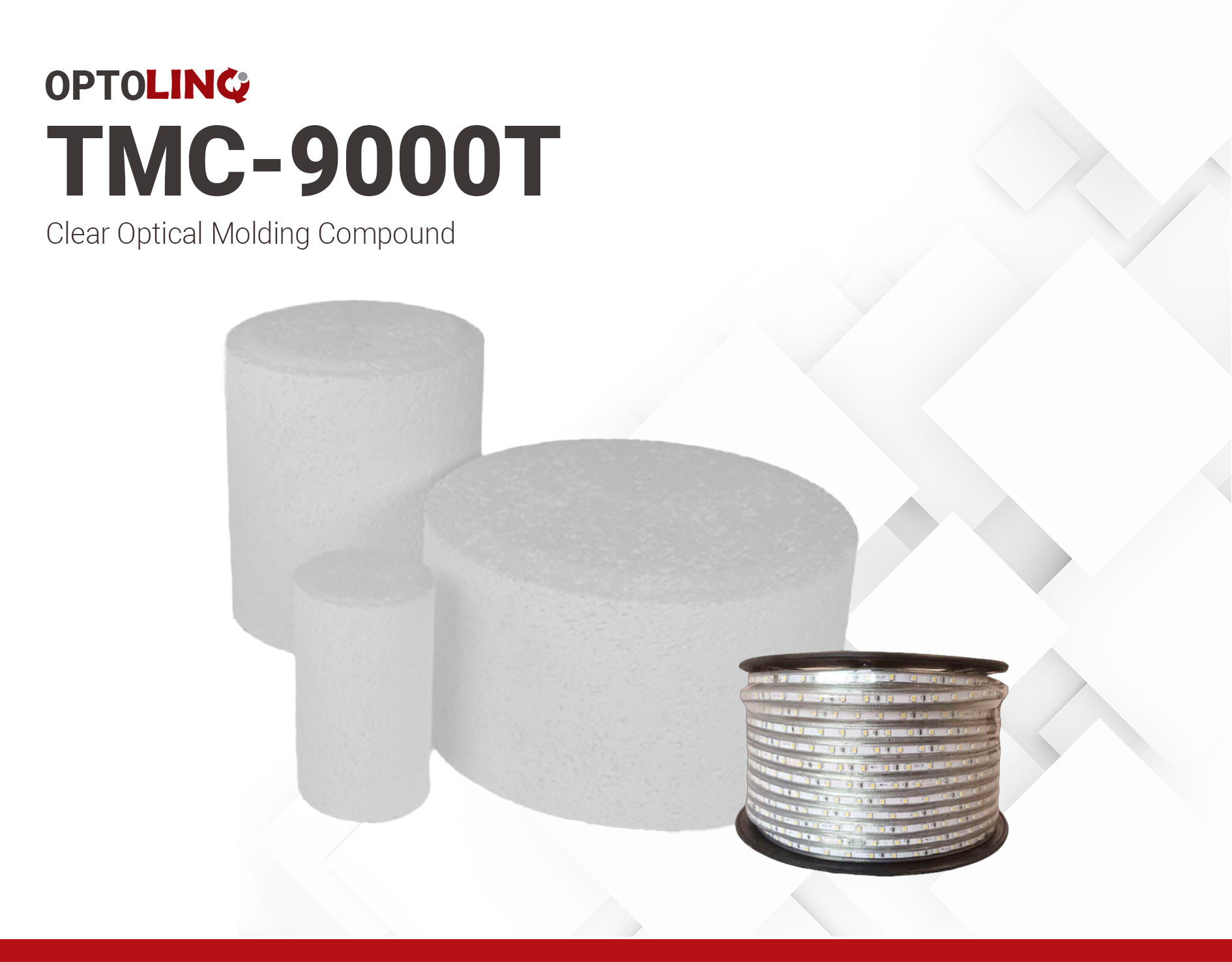TMC-9000T | Clear Optical Molding Compound
- Transparent Filler Technology
- Anti-blue Decay
- Low CTE & Low Moisture Absorption
Product Description
OPTOLINQ TMC-9000T is a high-performance optical solid epoxy specifically developed for white decorative and backlight LED encapsulation. This monocomponent epoxy achieves superior adhesion performance and great transmittance. Its stability at high temperature aids towards a good package performance and long life. More important, TMC-9000T applies transparent filler technology to achieve low CTE and low moisture absoprtion.
TMC-9000T is developed based on TMC-8060 formula, which is able to offer low blue-ray decay for outdoor LED applications and overall great light performance. This anti yellowing white epoxy is very close to competitive solutions such as XX814, XX1000 and XX97.
Reliability Tests Passed:
- Thermal cycling, -45°C ~ 100°C * 500 cycles
- Double 85, 85°C * 85%RH * 168hrs
- High temperature storage, 150°C * 1000hrs
- Reflow, 260°C * 10s * 3 times
Other Versions In TC-8060 Series:
- TMC-8060 Orignal Version
- TMC-8060-IMP Low modulus version
To Know More about TC-9000T:
- TMC-8060 Series Anti-blue Decay Data
- TMC-9000T High Temperature Storage Data
- TMC-9000T Filler Content Data
Technical Specifications
| General Properties | |||||||||
| Appearance Appearance Appearance at room temperature. | white, tablet | ||||||||
| Filler Content | 40~80 % | ||||||||
| Refractive index Refractive index The refractive index determines how much the path of light is bent, or refracted, when entering a material. It is calculated by taking into account the velocity of light in vacuum compared to the velocity of light in the material. The refractive index calculation can be affected by the wavelength of light and the temperature of the material. Even though it is usually reported on standard wavelengths it is advised to check the TDS for the precise test parameters. | 1.52 | ||||||||
| Specific Gravity Specific Gravity Specific gravity (SG) is the ratio of the density of a substance to the density of a reference substance; equivalently, it is the ratio of the mass of a substance to the mass of a reference substance for the same given volume. For liquids, the reference substance is almost always water (1), while for gases, it is air (1.18) at room temperature. Specific gravity is unitless. | 1.5~2.0 | ||||||||
| Physical Properties | |||||||||
| Spiral Flow @ 175°C | 100~200 cm | ||||||||
| Mechanical Properties | |||||||||
| |||||||||
| |||||||||
| |||||||||
| Electrical Properties | |||||||||
| Visible Light Transmission | >10 % | ||||||||
| Thermal Properties | |||||||||
| |||||||||
| |||||||||
| Glass Transition Temperature (Tg) Glass Transition Temperature (Tg) The glass transition temperature for organic adhesives is a temperature region where the polymers change from glassy and brittle to soft and rubbery. Increasing the temperature further continues the softening process as the viscosity drops too. Temperatures between the glass transition temperature and below the decomposition point of the adhesive are the best region for bonding. The glass-transition temperature Tg of a material characterizes the range of temperatures over which this glass transition occurs. | 150 °C | ||||||||
| Curing Conditions | |||||||||
| |||||||||
| |||||||||
| Transfer Pressure | 10~40 kg/cm2 | ||||||||
| Transfer Time | 20~50 s | ||||||||
Additional Information
To meet higher MSL test requirements, clear molding compound is expected to have (1) low moisture absorption; (2) low stress generated; (3) low CTE. Our filler technology could helpmeet these challenges. With the content of filler increasing in TMC-9000T, the CTE and water absorption both decrease. Meanwhile, TMC-9000T is based on the TMC-8060 product platform, TMC-9000T remains the superior anti-blue decay property as TMC-8060. Worth to be mention, the straight light R-transmittance will also decrease a lot with filler content increase. Thus, we usually keep the filler content in the range of 40~80% based on specific application needs.
